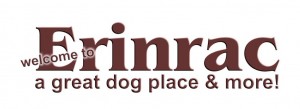Flipping through this book it belies the depth of information and resources tuck away neatly in 160 pages. Once you get into reading it, there are tons and tons of information, which is as well for someone who has never done anything with acupressure other than learn how to spell the word!
Acupressure is essentially acupuncture without the needles, you apply pressure as you breathe out, and release pressure from the point as you breathe in; this helps the transfer of Chi (pronounced chee) between patient and practitioner. Chi runs through the body on a 24 hour cycle along the twelve meridians, each with a sister meridian, which are complemented by two Extraordinary Vessels. Along each of the meridians are points that respond to pressure or stimulation and aid in chi flow. The acupressure points reside along the meridians and can also be classified as Accumulation, Alarm, Association, Command, Connecting, Influential, Master, Sedation, Source, Ting, and Tonification points.
The authors have had a wealth of experience in transferring the concepts of Traditional Chinese Medicine from the modern published world to their own practice of acupressure for dogs, horses, and cats. Here in this neatly produced softcover they present you with the know how and discuss the basics of doing acupressure at home.
For a complete novice it will take a couple of reads, this is no walk in technique and, as always, the best way to learn is hands on. The authors aren’t actually present to show you the meridians but their comprehensive range of charts supported by excellent paragraphs describing the locations of the relevant acupressure points for a variety of conditions and those of most importance in the meridians are excellent.
This title covers pre-treatment, acupressure, and post-treatment, when, how often, and for how long a treatment should be conducted. There is also a good chapter covering stretches you can help you dog with, and these form part of the specific treatments for the ailments discussed at the end of the book.
There is no index, but a good glossary (Handy for reminding yourself of the anatomical names sometimes used), and a good Table of Contents.
For someone who has some concept of the principles of acupressure then the charts and a review of techniques are going to be useful. As also are the reference charts and detailed text support for conditions ranging from arthritis, through constipation, lower back soreness, to impaired or declining vision.
If you are a novice with acupressure but would like to trial it on your own dog, this is going to give you a sound and broad basis to consider its application. If you already have your dog receive acupressure, then The Well Connected Dog will give you some insight into how and why your practitioner does what. For the experienced practitioner then the value must lie in the handy reference charts and review of ways to apply acupressure.
This copy generously donated to Victorian Canine Association Laurie Luxmoore Library November 2007 by the publishers.
Available from the publishers
Tallgrass Publishers, 4559 W.Red Rock Drive, Larkspur, CO 80118, USA =
